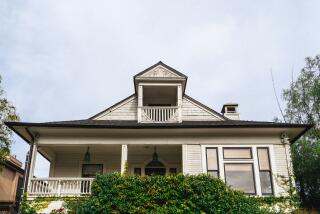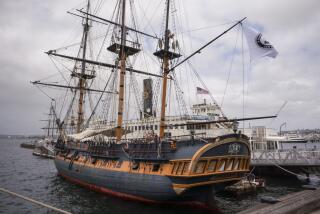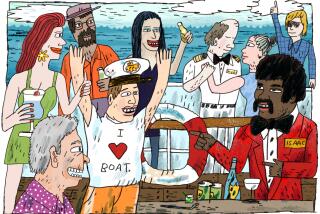Classic Ports of Call
ABOARD THE STELLA SOLARIS — The 86-carat Spoonmaker’s Diamond was dazzling, the diamond-and-emerald encrusted daggers were mesmerizing, and the throne of emeralds and pearls was very, very impressive. But in Istanbul’s Topkapi Palace, a magnificent complex created by Mehmet the Conqueror in the late 15th century and later enlarged by Suleyman the Magnificent, the most impressive and moving sight we encountered was not the glittering jewels, the shimmering pearls or the golden treasures.
Our magical moment came after we had toured the Harem, the 16th century labyrinth of more than 400 rooms, hallways and terraces where the sultan and his family and servants lived. We walked across the Third Court of the hilltop complex overlooking the Bosphorus and entered a low pavilion where some of Islam’s most sacred relics are displayed. There, in a room, called, depending on your translation, the Pavilion of the Holy Mantle or the Suite of the Felicitous Cloak, we were inspecting the first Koran, and relics of the Prophet Mohammed: his sword, hair from his beard, teeth and earth from his tomb.
Then the sound began, at first a low moan that turned into a modulating wail. “It is the call to prayers,” our guide explained. “Muslims pray five times a day.”
We could hear it echoing from loudspeakers on the towering minarets studding the city landscape. But this call came not from an electronic speaker, but from much closer. We edged over to an arched window looking into an adjacent room, where, almost hidden by the wooden grate keeping us out of that room, a Muslim cleric knelt on a rug before a large copy of the Koran. His hair and long beard a platinum white, the cleric, dressed in an elegant gown of red and white, chanted his prayers.
This inadvertent glimpse of faith was just one of the memorable moments we encountered last summer on a two-week “Cradle of Civilization” cruise on Royal Olympic Cruises’ Stella Solaris, which focused on the major civilizations of the Mediterranean.
The epoch-hopping, ruin-a-day itinerary was the strength of this cruise. On the plus side, in addition to the itinerary, was the attentive service of the Greek crew, the quality of the food, the multinational cast of passengers and the remarkable stability of the 38-year-old former French liner. The Stella Solaris, which can carry 620 passengers in 329 cabins, isn’t a new ship, but it does have the amenities one now expects at sea: two swimming pools, a casino, a spa, a movie theater, nightclubs and entertainment.
On the minus side, at least in our case, was the inadequate air-conditioning in our cabin. After four days of complaints--and a lack of communication from hotel management--we finally were moved to a cabin with adequate air-conditioning. Another minus was the lack of an on-board historian who could present lectures and slide shows to put into context the histories and cultures of the areas we were cruising.
The cruise began in Athens, where we spent a night in a hotel near the shadow of the Acropolis. After a morning group tour of the Acropolis and the Parthenon, we boarded the Stella Solaris in Pireaus, the port of Athens, and sailed for the island of Kos, known as the birthplace of Hippocrates. We had only a half a day in Kos, so we explored the ruins of the Castle of the Knights, built in the 15th century by the Crusaders, and then walked along the cafes in the harbor.
By lunchtime the next day, we were entering the Egyptian city of Alexandria, a busy commercial port. There we would board buses for a 3 1/2-hour journey to the Giza district of Cairo, where we paid a post-dinner visit to the Sphinx for a surprisingly entertaining sound-and-light show, and spent the night in the luxurious Grand Forte hotel under the looming presence of the Pyramids.
Next morning, we battled the rush-hour traffic in downtown Cairo, to visit the Citadel, the city’s stronghold since the 12th century, and the mosque of Mohammed Ali, the Egyptian ruler who forged an independent Egypt in the early 1800s. Then it was onto Cairo’s Museum of Egyptian Antiquities to see the treasures of King Tutankhamen. And then on to the Pyramids.
After a brief stop at the Sphinx, we boarded the buses for our drive north to Port Said, where we rejoined the ship.
During all our time on land in Egypt we were accompanied by an armed military Jeep that preceded the tourist bus. We never encountered any problems, but the presence of the military escort, and an armed guard in civilian clothes inside the bus, was disconcerting. More disconcerting, somehow, than the more upfront presence of armed Israeli soldiers we on every street corner in Jerusalem.
Our visit came several months before the November terrorist massacre of tourists at Luxor that killed 62, and the September firebombing of a tourist bus outside the Egyptian Museum in Cairo that killed 10.
The attacks have caused some cruise lines, including Royal Olympic Cruises, to cancel scheduled visits to Egypt in 1998. Thus, this year’s “Cradle of Civilization” cruise aboard the Stella Solaris substitutes Antalya, Turkey, and Haifa, Israel, for last year’s Cairo segment. (If you have booked a cruise that includes stops in Egypt, check with the cruise line for changes.)
Our next stop was another magical land, Israel, where we arranged for a guide to take us to Jerusalem.
Our guide, Birgit Fischermann, a Holocaust survivor from Denmark, met us with a van and driver on the dock in Ashdod, about an hour’s drive from Jerusalem. During the drive, she told us about the history of the area we were passing through, noting the frequent burned-out shells of vehicles on the roadside that stand as monuments to the 1948 war and unsuccessful attempts by Israeli soldiers to run the Arab blockade of Jerusalem. She suggested two stops that were not on our loosely drawn itinerary: first, a visit to the Holyland Hotel to see a model of ancient Jerusalem, a quarter-acre re-creation of Jerusalem from the time of the Second Temple (587 BC to AD 70).
The second stop was more sobering: Yad Vashem Memorial, a complex of monuments, gardens, exhibits and buildings dedicated to the victims of the Holocaust. One building remembers the 1.5 million children killed in the Holocaust. Another monument, a new outdoor memorial, is a complex of giant monoliths, stacked to form a maze. The stones bear the names of Jewish communities in Europe that were lost in the Holocaust. After this moving visit, we took our van to lunch at a cafe outside the city walls, and then to the Dung Gate, where we entered the old city of Jerusalem.
Our final major stop in Jerusalem was the Church of the Holy Sepulchre, a religious center whose story tells much about Jerusalem. The church is divided among six different faiths: Roman Catholic, Armenian Orthodox, Greek Orthodox, Egyptian Coptic, Ethiopian Orthodox and Syrian Orthodox.
We saw more sights in this moving, maddening city: excavations of roads from the 1st century; covered streets filled with shops selling souvenirs and religious items; outdoor plazas perfect for a drink and a moment of rest.
Our final stop, though, was across the valley on the Mount of Olives. From a roadside parking area, the city of Jerusalem stretched below us. And the major attraction was the Dome of the Rock on Temple Mount, where Abraham is said to have prepared to sacrifice his son Isaac; where the Prophet Mohammed left a footprint and the Archangel Michael left a handprint.
*
After Egypt and Israel, we needed port calls that were easier on our psyches. Limassol, in Cyprus, offered us more ruins--of a Greek theater and temple decorated with mosaics. Then came Santorini, a chic resort whose night life, shopping and sheer picturesque cliffs filled the bill.
Our seventh day on the ship brought us back to Athens, where those passengers on a one-week cruise left, new passengers came aboard and those on the two-week cruise took a free tour to Cape Sounion, which Homer called the “sacred headland.” The cape, about two hours’ drive southeast of Athens, offers great views of the Saronic Gulf and is the location of another classic temple, this one dedicated in the 5th century BC to Poseidon.
This short trip, designed more to get us out of the way of the incoming passengers, was a sightseeing diversion, offering us glimpses of Greek resort towns and villages. And like all the ship-organized tours, it was well planned and led by informative guides.
Our second week aboard took us first to Irakleion in Crete, where we took a tour of a place linked to the Minoan civilization. Outside Irakleion, archeologists are uncovering the palace of Knossos, which legend says was where King Minos lived and the fabled Minotaur roamed a subterranean maze.
Our next stop, Rhodes, offered us a walled city built by Crusaders in the 13th and 14th centuries. After a morning touring the cobblestoned streets built by the Knights of St. John and the 14th century Palace of the Grand Masters, a showplace of Hellenistic and Roman mosaics and medieval architecture, we focused on shopping and the beach.
There was another religious pilgrimage site on our next stop--Patmos, a small island known as the place where St. John the Divine wrote the Book of Revelations. We took a bus to the towering cliffs overlooking the harbor and town, where we found the Monastery of the Apocalypse, which we reached by taking a winding set of timeworn steps down to a cave-like grotto. The monastery is built around a fissure in the rock wall, where St. John is said to have heard the voice of God.
*
Leaving Greece for port calls in Turkey, we first came Dikili, where ship’s passengers took a bus tour to the mountain citadel of Pergamum.
Next stop was Kusadasi, a Turkish resort town where the major attraction is inland--Ephesus, perhaps the finest archeological ruin from the Greco-Roman era.
We entered Ephesus on the high end of the town, walking down a broken, uneven and worn marble road into a city of marble. There we saw the grand facade of the Prytaneum, or city hall, whose four 30-foot-high columns are covered with inscriptions in Latin. “The inscriptions set out the laws of the town of Ephesus, so that everyone, even strangers, would know what was allowed,” our guide told us. “The phrase--’written in stone’--is believed to have come from this practice.”
One of the restored buildings is the Temple of Hadrian, a house-size structure.
Our last major stop was another legendary city--Istanbul, from which the sultans ruled much of the Mediterranean for centuries. The top attraction here was the Topkapi Palace, but no less impressive was the huge rust-red building just outside the Imperial Gate of Topkapi. Erected in 548 as the Church of the Divine Wisdom (Sancta Sophia in Latin, Hagia Sofia in Greek, Aya Sofya in Turkish) by the Emperor Justinian, it was the greatest church in Christendom--and the largest building in the world until St. Peter’s was constructed in Rome--until 1453, when Constantinople (the Byzantine name for Istanbul) was conquered by Mehmet II.
This was our 12th day on the cruise, and it was time to wind down from the awesome history lesson with a day on Mykonos--the perfect, relaxing ending to our journey into the past.
Fox is a Maryland-based freelancer who writes frequently on cruising, and co-author of “Romantic Weekend Getaways: The Mid-Atlantic States,” (John Wiley & Sons).
(BEGIN TEXT OF INFOBOX / INFOGRAPHIC)
GUIDEBOOK
History 101 in Its Cradle
Royal Olympic Cruises’ 14-day “Cradle of Civilization” cruise is offered this year July 20 and Aug. 10. Cruise-only fares start at $2,725 per person, double occupancy; early-booking discounts (15% off) offered up to 60 days before sailing. For brochures, telephone (800) 872-6400; for reservations, contact a travel agent.
Birgit Fischermann, our excellent Jerusalem guide, can be contacted at Zur Hadassa 230, P.O. Box 162, Mobile Post Ha’ela 99875; tel. 011-972-2-533-2107; charge, $120 per day.
More to Read
Sign up for The Wild
We’ll help you find the best places to hike, bike and run, as well as the perfect silent spots for meditation and yoga.
You may occasionally receive promotional content from the Los Angeles Times.






